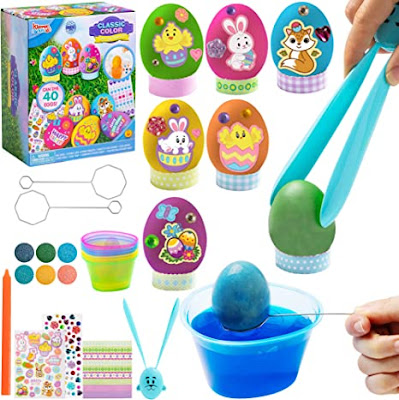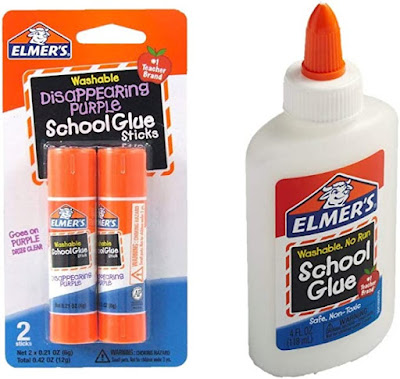
Do you know the history of cascarones? Because it is very interesting. And after learning the story behind these "Mexican Easter eggs," I'm finding them even more fascinating.
This post contains affiliate links.
First off, in case you don't know, cascarones are brightly colored/decorated eggshells that are filled with confetti. They may be simply made by children or elaborate, hand-painted masterpieces by artists. Here in the States, they are used during celebrations, typically around Easter. In Mexico, they are popular during the time of Carnaval. But really, people may use them during any festive occasion.
According to historians, cascarones originated in China. It is rumored that Marco Polo first brought them to Italy, and on to Spain, and they eventually made their way to the Americas. In the beginning, the eggs were quite elegant and valuable; instead of confetti, they were filled with perfumed powders, making them popular with high-society women.
They became quite popular in Mexico in the 1860s, after Emperor Maximiliano's wife, Carlotta, introduced them to the country. In Mexico, the powders were replaced with confetti and given their name "cascarones," the plural form of "cáscara," which means shell in Spanish.
Today, the tradition of making and using cascarones to celebrate is mostly popular in the Southwestern United States, though areas of Mexico still use them. Many say that good fortune falls upon the person who has un cascarón cracked over their head - and smashing one on someone's head is actually a sign of affection. Young adults often use them to engage in mild flirtation.
What Are Cascarones?
First off, in case you don't know, cascarones are brightly colored/decorated eggshells that are filled with confetti. They may be simply made by children or elaborate, hand-painted masterpieces by artists. Here in the States, they are used during celebrations, typically around Easter. In Mexico, they are popular during the time of Carnaval. But really, people may use them during any festive occasion.
Where Did They Come From?
According to historians, cascarones originated in China. It is rumored that Marco Polo first brought them to Italy, and on to Spain, and they eventually made their way to the Americas. In the beginning, the eggs were quite elegant and valuable; instead of confetti, they were filled with perfumed powders, making them popular with high-society women.
They became quite popular in Mexico in the 1860s, after Emperor Maximiliano's wife, Carlotta, introduced them to the country. In Mexico, the powders were replaced with confetti and given their name "cascarones," the plural form of "cáscara," which means shell in Spanish.
Today, the tradition of making and using cascarones to celebrate is mostly popular in the Southwestern United States, though areas of Mexico still use them. Many say that good fortune falls upon the person who has un cascarón cracked over their head - and smashing one on someone's head is actually a sign of affection. Young adults often use them to engage in mild flirtation.
Printable Activities
I've created a bilingual minibook for elementary-aged children with this history. It includes coloring pages and even directions for making your own cascarones. It's a fun little resource for parents and teachers.
Older children, may enjoy this one-page reading passage (and it comes with a 7-question comprehension quiz for use in the home or school classroom).
I also have this fun Decorate Your Own Cascarón Bilingual Activity.
I also have this fun Decorate Your Own Cascarón Bilingual Activity.
Children's Books
You might also be interested in these books:
Fun Videos
- Whistlefritz has this delightful video of a Spanish song featuring cascarones. Great for Spanish learners and bilingual families!
- You might also love these How to Make Confetti Eggs (Cascarones) Videos
- Whistlefritz has this delightful video of a Spanish song featuring cascarones. Great for Spanish learners and bilingual families!
- You might also love these How to Make Confetti Eggs (Cascarones) Videos
How Do You Make Cascarones?
But I will share with you a quick photo tour of our adventure in making them:
 |
First, we drained the eggs by making a small hole and then washing out the empty shell. Then we colored them using a traditional egg coloring kit. |
 |
While the colored eggs were drying, we spent ages making confetti using colored cardstock and a hole punch. |
 |
Hours later and with sore hands, we finally had enough confetti and eggs! |
 |
We made a simple funnel from some recycled paper, then added two spoonfuls of confetti. |
 |
A little glue around the edges of our hole.... |
 |
Followed by a nice tissue paper "cap" |
 |
A few stickers and other embellishments, y ya! The cascarones are done! (A few were lost in the whole process. Empty eggshells are a little delicate - especially when handled by little fingers.) Supplies for Making CascaronesHere's a list of some of the supplies we use when making cascarones. Easter Egg Dye Kit (I like this one because it comes with sticker that the kids can use) |
What if I have shells left over?
If you wind up saving more egg shells than you have time to dye and fill, here's a great idea on what to do with them!







